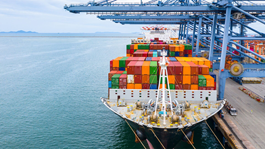Introduction
It is timely for some reflections on the future for gas and liquefied natural gas (LNG) in Australia and the Asia-Pacific (APAC).
Gas and LNG play will need to play a significant role in meeting the energy needs of economies in the APAC region for some time to come, although to varying extents in different jurisdictions and for varying reasons. In the Australian context this reality was acknowledged in the release of the Australian Government’s Future Gas Strategy in May 2024 (the Strategy). It also reflects the regional demand profile in most scenarios, modelled by the International Energy Agency (IEA) and others and the requirements of the domestic grid as variable renewable energy and energy storage increase in penetration.1
In setting out six key principles, the Strategy signals to key trading partners the Australian Government’s continued support for the gas industry.
The role for gas into the foreseeable future is not without controversy.
Particularly in developed economies, active steps will need to be taken by gas producers to demonstrate both that they are serious in their efforts to reduce overall emissions, and that these efforts are effective. The alternative is the risk of decreasing social licence and higher, more costly regulation.
Future gas needs
It is likely that even in the most ambitious decarbonisation scenarios, Australian produced gas will have a material role in Australia and the APAC region past 2050 in supporting domestic energy demand, system reliability and ensuring that Australia remains a key energy supplier to the region.
Looking inward: domestic energy needs
While demand for gas for domestic and commercial use is projected to fall, it is anticipated that demand for natural gas in electricity generation will increase.2
The need for natural gas and new sources of supply to ensure energy reliability and affordability during Australia’s transition to net zero is highlighted in Strategy principles #3 and #4, with affordable gas supply to meet demand during this period as emphasised in Strategy principle #2.3
The key reason for this is that gas is expected to play a critical role in complementing variable renewable energy generation, particularly as existing coal fired generators are shut down. While battery technology and other technologies such as pumped hydro will also be integral given the amount of firming required (the Australian Energy Market Operator (AEMO), in their Integrated System Plan (ISP), forecasts that the National Electricity Market (NEM) will need 57GW/660GWh of storage capacity by 20504), gas fired generation is expected to be critical to firming a renewables dominated grid.
Looking inward: matching production, demand and delivery of gas
Whilst the need for gas-fired generation to support the transition of the power sector is acknowledged, domestic gas demand for residential and industrial use is diminishing with decarbonisation. The Grattan Institute has published a paper titled “Getting off gas, why, how and who should pay?” (the Paper)5.
Gas pipeline operators levy use of system charges to convey gas to about 5 million households in Australia. As observed in the Paper6, through electrification and commensurate reduction in gas demand, pipelines will face decreasing revenue or need to charge higher and higher rates to those users that choose (or remain captive to) gas. The quest will be to get the settings right for an equitable allocation of the costs of decommissioning gas networks and investing to strengthen the power network in the face of electrification.
Of course, reducing domestic demand frees up gas for LNG export.
Looking outward: APAC’s energy needs
Australia currently provides one-fifth of the global LNG trade, with nearly 90% of Australian LNG exports being supplied to Japan (36%), China (28%), the Republic of Korea (14%) and Taiwan (11%).7
However, Australia’s share of the global LNG market seems set to decrease as new projects in the Middle East and potentially the United States come on-line.
It is expected that Australian LNG will remain attractive for Asian buyers because of lower transport costs and non-price factors. These factors include geopolitical relationships, secure trading routes, transparent institutions, and openness to foreign investors taking majority ownership stakes in gas.8
Meanwhile, the APAC region economies are undergoing a profound energy transformation, with the region forecasted to dominate global LNG demand over the next 30 years as many economies seek to diversify their energy mix. The increased demand for LNG across Asia is expected to be driven by a variety of factors including population increase and rising living standards, the need to replace coal fired generation capacity, limited domestic gas supplies and limitations on the amount of renewables that can be developed in often geographically constrained land and coastal water areas.9
- Currently each of Japan, Korea and Taiwan are highly dependent on imported fossil fuels – these markets were the second (Japan), third (Korea) and fifth (Taiwan) largest LNG importers globally in 2023, and collectively accounted for roughly one-third of global LNG imports.10
- While Japan and Korea are seeking to reduce LNG imports by 2030 by replacing LNG (and coal) with renewable energy sources (green hydrogen/ammonia etc rather than wind/solar which will presumably only have minor roles to play, and potentially nuclear) Taiwan aims to increase LNG imports as it phases out nuclear.
- In contrast to Japan and Korea, based on LNG trading forecasts, the Association of Southeast Asian Nations (ASEAN) is set to shift from being a net exporter to a net importer of LNG by 2025,11 with the Philippines, Thailand and Bangladesh in particular expected to be key demand growth markets.12
One of the key guiding principles under the Strategy is that Australia is, and will remain, a reliable trading partner for energy.13
Looking forward: carbon credibility
If carbon-emitting energy generation is required for the transition to net-zero, then active and measured progress on carbon abatement of gas production is desirable. The Strategy recognises that Australia’s commitment to reach net-zero emissions by 2050 cannot be achieved without reducing or decarbonising the production and consumption of natural gas.14
The gas industry has focussed on the development of carbon capture and storage (CCS) technologies as a principle means to achieve this. However, Australia is lagging Europe, the United States and the Middle East in this respect. The Chevron operated Gorgon facility is currently the only operational large scale CCS facility in Australia, although there are a number of other facilities in development. The Commonwealth Government has also recently announced the release of additional offshore acreage to encourage exploration for greenhouse gas storage in Australia’s offshore area.
There is scope for significant growth of CCS in Australia. Following recently enacted legislation15 Australia is poised to enter into bilateral treaties with parties to the London Protocol16 that will facilitate the industry by enabling the import of CO2 into Australia and enable Australia to play a role in the APAC region’s abatement and emissions reduction efforts.
CCS can also potentially be applied to hard-to-decarbonise industries like cement, steel, and chemical manufacturing by using CCS technology to capture the emissions generated in the production process.17
It should be noted however that the effectiveness of CCS technologies to reduce emissions remains contested, especially at the scale required. It will be a critical challenge for the industry over the coming years to overcome these concerns.
Another key environmental vulnerability of gas production is methane emissions. The European Union has recently passed regulation designed to force the measurement of these emissions. These are focused, at least in the short term, on requiring better data measurement and transparency but may ultimately lead to import restrictions where baseline targets are not met. Demand side-led regulatory initiatives of this nature can be expected to increase in future in order to support net zero objectives.
Production of synthetic gases in Australia such as e-methane using renewable hydrogen and CO2 captured from gas production activity is also being evaluated by some industry participants as a potential means of reducing the sector’s contribution to emissions, and is favourably considered as such products can be liquefied and transported using existing LNG infrastructure and injected into existing gas distribution networks.
Conclusion
Listening to the presentations at Gastech two clear themes emerged. First, confidence in the demand for gas continuing at least through the 2040’s. This confidence reflects the demand forecasts, particularly in the APAC context, for South and Southeast Asia. It also reflects the critical role of gas in the energy security, and therefore the geo-politics, of the region. Second, in meeting that demand, gas production, particularly coupled with the application of CCS technologies and a focus on reducing emissions in the production process, could contribute to the global drive to decarbonise through lower carbon LNG and in replacing higher emitting energy sources, particularly coal.
However, there are potential headwinds. In particular, the social licence for increased gas production in Australia and other key exporting economies such as the United States is likely to remain politically contested through electoral cycles. The industry’s ability to navigate these challenges will be dependent on it demonstrating that it can be part of the solution to decarbonisation, not part of the problem.
Norton Rose Fulbright is at the forefront of gas procurement and project development. Complemented by in-depth knowledge of the Australian market, we can draw on our global expertise and experience to facilitate the end-to-end delivery of your strategic gas projects.











